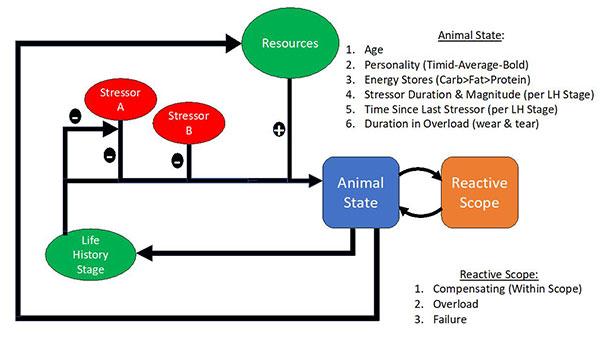Mathematical Modeling
The stress response is a major mechanism of resilience and an important transducer of interactions between the living and nonliving (abiotic) worlds. It is astonishing that even after nearly 100 years of studying stress, we still lack a rigorous quantitative model that allows us to predict the impact of stressors on individuals and populations. The lack of such a model is retarding progress in understanding the ecology and pathophysiology of stress responses.
We are collaborating with Nina Fefferman at the University of Tennessee to create and test a quantitative predictive model of stress using the Reactive Scope graphical model as the foundation. Key to Reactive Scope theory is that wear-and-tear is created by prolonged activation of a stress mediator, increasing the probability of generating stress-related pathology. We are using the rate of wear-and-tear to generate predictive quantitative models for how individuals, and by extension populations of individuals, will respond to stressors. We then use established stress protocols measuring corticosteroid, fight-or-flight, and behavioral responses to empirically test the predictions generated by the quantitative models.
When completed, the creation of an integrated theoretical conceptual and quantitative theory will provide the foundation to resolve long-standing questions in stress physiology and open up novel areas of research.
